9 Design Experts on the One Thing You Need for a Fab Family Home
Building or renovating a family home? We asked nine design experts for the one feature that makes the biggest difference
Georgia Madden
28 May 2021
Every family is unique and will want different things from a home. But it’s safe to say that some desires are universal – good flow, functionality and the opportunity to connect as a family. We asked nine design experts to share the one feature or inclusion they believe no family home should be without.
Image: Petra Ford
Jessi Deakin, stylist and owner of Jessi Eve Interiors, says:
1. Adequate storage
Storage is so important in a family home. A shortage of storage can mean clutter, chaos and disorganisation as you navigate toys, school bags and books, sporting equipment and everything else that comes along with family living.
Practical storage helps you create organisational systems so clutter doesn’t build up on surfaces and in the corners of rooms. It’s the key to maintaining some level of serenity in a family home.
Jessi Deakin, stylist and owner of Jessi Eve Interiors, says:
1. Adequate storage
Storage is so important in a family home. A shortage of storage can mean clutter, chaos and disorganisation as you navigate toys, school bags and books, sporting equipment and everything else that comes along with family living.
Practical storage helps you create organisational systems so clutter doesn’t build up on surfaces and in the corners of rooms. It’s the key to maintaining some level of serenity in a family home.
Smart storage can be as simple as having some beautiful oversize baskets in the corner of your living spaces and kids’ rooms that allow for a quick scoop-up of toys throughout the day. Or it could be a storage bench and wall hooks in your entrance or mudroom for shoes, coats, school bags and umbrellas.
A beautiful sideboard or buffet can make for great storage in a dining or living area.
On the other end of the scale, you might invest in some custom joinery with a combination of enclosed storage and open shelving in your living area. Here you might display all your favourite pieces while achieving a beautiful, seamless finish that complements the rest of your home.
Or you could upgrade to built-in wardrobes in the bedrooms. You can customise the internals to suit your family’s specific storage needs and make maximum use of space.
A beautiful sideboard or buffet can make for great storage in a dining or living area.
On the other end of the scale, you might invest in some custom joinery with a combination of enclosed storage and open shelving in your living area. Here you might display all your favourite pieces while achieving a beautiful, seamless finish that complements the rest of your home.
Or you could upgrade to built-in wardrobes in the bedrooms. You can customise the internals to suit your family’s specific storage needs and make maximum use of space.
Jasmine McClelland, principal designer at Jasmine McClelland Design, says:
2. Heated towel rails
One tip that we can’t go past is to put heated towel rails in your bathrooms – hydronic where possible. They are a bit more of an outlay initially than non-heated styles, but they offer so many benefits, particularly for family living.
Ready (or nearly ready) to renovate? Find a local interior designer on Houzz
2. Heated towel rails
One tip that we can’t go past is to put heated towel rails in your bathrooms – hydronic where possible. They are a bit more of an outlay initially than non-heated styles, but they offer so many benefits, particularly for family living.
Ready (or nearly ready) to renovate? Find a local interior designer on Houzz
The most appealing factor is less work; less washing, less drying, your towels are warm and fresh when it comes time to use them, as is your bath matt. This is a lifesaver and such a luxury, particularly when you have kids and feel like you’re constantly washing everything.
It also means your towels can be folded neatly and there will be less moisture and dampness in your bathroom. Your space will look sharp and smell fresh, which is so important – especially when guests are coming over.
An added bonus is a toasty warm bathroom on those freezing cold mornings. A heated towel rail truly is a game changer.
It also means your towels can be folded neatly and there will be less moisture and dampness in your bathroom. Your space will look sharp and smell fresh, which is so important – especially when guests are coming over.
An added bonus is a toasty warm bathroom on those freezing cold mornings. A heated towel rail truly is a game changer.
Sophie Kost, interior designer and principal at My Beautiful Abode, says:
3. Plan for the future
Keep in mind that children grow into full-size adults. When you are planning a renovation or new build with small children, consider how spaces will be used in years to come.
The number of homes I’ve been to with second-storey additions that have low ceilings, small rooms suited to single beds and minimal storage always surprises me.
3. Plan for the future
Keep in mind that children grow into full-size adults. When you are planning a renovation or new build with small children, consider how spaces will be used in years to come.
The number of homes I’ve been to with second-storey additions that have low ceilings, small rooms suited to single beds and minimal storage always surprises me.
These rooms become a problem when the kids outgrow the single bed and there is no room to squeeze in a queen bed, or the sweet desk that was perfect for primary school colouring in is now inappropriate for final school exams or university textbooks. That collection of giant skater/basketball/dance shoes may no longer have a space in the small wardrobe too.
When planning children’s rooms, aim for a 4 x 4-metre floor area to future proof the room. And, if you can extend the budget, push the ceiling up from the minimum for a bit more head room.
When planning children’s rooms, aim for a 4 x 4-metre floor area to future proof the room. And, if you can extend the budget, push the ceiling up from the minimum for a bit more head room.
Anoushka Allum, interior designer and principal at Anoushka Allum Design, says:
4. A walk-in pantry
I believe a walk-in pantry is a must-have in the kitchen of a busy family home.
With more of us having open-plan living areas, the kitchen is front and centre. A walk-in pantry helps keep the main kitchen tidy – you can store all your small appliances here and do food preparation when you’re entertaining.
4. A walk-in pantry
I believe a walk-in pantry is a must-have in the kitchen of a busy family home.
With more of us having open-plan living areas, the kitchen is front and centre. A walk-in pantry helps keep the main kitchen tidy – you can store all your small appliances here and do food preparation when you’re entertaining.
If the walk in-pantry I’m designing has the space, I’ll include a sink, dishwasher drawer or full dishwasher, plenty of open storage, and closed storage in the area that can be seen from the door when it’s open.
Drawers to store food items are key; they keep everything neatly stored away and items are easy to access, particularly when you’re in a rush.
A walk-in pantry isn’t just about food storage these days – it’s a space to make drinks, snacks and prepare dishes when we’re entertaining. For this reason I always try to include bench space to accommodate small appliances, such as kettles and toasters, and to do food-preparation work.
Drawers to store food items are key; they keep everything neatly stored away and items are easy to access, particularly when you’re in a rush.
A walk-in pantry isn’t just about food storage these days – it’s a space to make drinks, snacks and prepare dishes when we’re entertaining. For this reason I always try to include bench space to accommodate small appliances, such as kettles and toasters, and to do food-preparation work.
Camilla Molders, interior designer and principal at Camilla Molders Design, says:
5. Comfort
Comfort is key in a family home – particularly when it comes to pieces such as sofas where you’ll probably spend a lot of time over the years.
Everyone’s idea of comfort is different, so in my view it’s worth going to the expense of having pieces custom-designed so they’re right for you. For example, you may want to have the sofas in your family room or living area custom-made to suit your unique proportions and desired comfort level.
With a custom sofa, you can shorten the seat, alter the height of the legs, change the cushion fill and even dictate how the piece is upholstered, for example with feature piping or special detailing.
5. Comfort
Comfort is key in a family home – particularly when it comes to pieces such as sofas where you’ll probably spend a lot of time over the years.
Everyone’s idea of comfort is different, so in my view it’s worth going to the expense of having pieces custom-designed so they’re right for you. For example, you may want to have the sofas in your family room or living area custom-made to suit your unique proportions and desired comfort level.
With a custom sofa, you can shorten the seat, alter the height of the legs, change the cushion fill and even dictate how the piece is upholstered, for example with feature piping or special detailing.
Dining chairs are another area where you should prioritise comfort to make for enjoyable family dinners and entertaining.
Timber cafe-style chairs might look great, however they are designed to keep you moving on and not for lingering. For family meals, I would recommend upholstered styles with comfortable seating.
Timber cafe-style chairs might look great, however they are designed to keep you moving on and not for lingering. For family meals, I would recommend upholstered styles with comfortable seating.
Image: May Photography
Giulianna Del Popolo, interior designer and principal at GDP Interior Design, says:
6. Lighting
Good lighting encompasses everything from orientation, windows, skylights and colour to artificial lighting. Light affects everything from the aesthetic, mood and functionality of a home to indoor temperature.
Just like the weather affects our mood, so does the amount and quality of light we receive in our living spaces. During the day, natural light can transform a room, depending on the orientation and window size. Likewise, a colder light can make you feel less cosy or even gloomy. It isn’t always an option to have favourable orientation, so the best way to remedy gloomy spaces is to have considered light sources, whether that is general ambient light, task lighting or mood lighting.
In conjunction with lighting, paint finishes and colour selections are key to accentuating the required light and mood of a room.
Giulianna Del Popolo, interior designer and principal at GDP Interior Design, says:
6. Lighting
Good lighting encompasses everything from orientation, windows, skylights and colour to artificial lighting. Light affects everything from the aesthetic, mood and functionality of a home to indoor temperature.
Just like the weather affects our mood, so does the amount and quality of light we receive in our living spaces. During the day, natural light can transform a room, depending on the orientation and window size. Likewise, a colder light can make you feel less cosy or even gloomy. It isn’t always an option to have favourable orientation, so the best way to remedy gloomy spaces is to have considered light sources, whether that is general ambient light, task lighting or mood lighting.
In conjunction with lighting, paint finishes and colour selections are key to accentuating the required light and mood of a room.
Image: May Photography
There’s so much to consider when it comes to lighting, so it’s best to consult an interior designer or lighting designer in order to get it right. This should ideally be done pre-build, at the same time as your plans are being put into place, to allow for all the necessary wiring to be roughed in, switch points to be considered, and light fittings and globes to be specified.
Your designer will be able to interpret your room orientation, window and skylight sizes to determine how much lighting you require in a room, the quality of light (warm or cool) and how you can add special effects fit for purpose.
There’s so much to consider when it comes to lighting, so it’s best to consult an interior designer or lighting designer in order to get it right. This should ideally be done pre-build, at the same time as your plans are being put into place, to allow for all the necessary wiring to be roughed in, switch points to be considered, and light fittings and globes to be specified.
Your designer will be able to interpret your room orientation, window and skylight sizes to determine how much lighting you require in a room, the quality of light (warm or cool) and how you can add special effects fit for purpose.
Gary Hamer, interior designer and principal at Gary Hamer Interior Design, says:
7. Space planning
The living or family room is one of the most important spaces within a family home – it tends to be where everyone gathers and a lot of different activities are performed, from watching movies and socialising to quiet times. As such, it’s crucial to furnish the space appropriately.
Space planning is key. It helps you work out exactly what furniture you’ll need and which sizes and shapes will work best in the space. It surprises me how many times clients purchase a sofa or dining table that looked great in the showroom, only to find it’s way too big for their living room.
7. Space planning
The living or family room is one of the most important spaces within a family home – it tends to be where everyone gathers and a lot of different activities are performed, from watching movies and socialising to quiet times. As such, it’s crucial to furnish the space appropriately.
Space planning is key. It helps you work out exactly what furniture you’ll need and which sizes and shapes will work best in the space. It surprises me how many times clients purchase a sofa or dining table that looked great in the showroom, only to find it’s way too big for their living room.
Before furnishing the room, consider what you and your family do there and make sure there is enough appropriate seating and surface space to pop a plate, a pile of books or a drink. Draw a floor plan to scale to work out whether furniture will fit – and remember to include some breathing space around each piece and ensure furniture doesn’t block doorways or traffic flow.
You want everyone in your family to feel calm, safe and uplifted in the space. When you’re creating the space plan, imagine the flow of air through your space as water. You need to create a slow, gentle flow that promotes calm. It might be a sofa with a curvy corner to balance square edges elsewhere or a round coffee table or ottoman to promote an easier flow around a living room.
You want everyone in your family to feel calm, safe and uplifted in the space. When you’re creating the space plan, imagine the flow of air through your space as water. You need to create a slow, gentle flow that promotes calm. It might be a sofa with a curvy corner to balance square edges elsewhere or a round coffee table or ottoman to promote an easier flow around a living room.
Jacquie Pask, interior designer at Moss Melbourne, says:
8. Personality
We always encourage clients with families to surround themselves with the colours, pieces and features they love rather than slavishly following trends. This way you’ll create a home that has personal meaning to you, which you’ll enjoy spending time in.
Bring cherished items and pieces of family history into the design – this is, after all, what will make your family home uniquely your own.
8. Personality
We always encourage clients with families to surround themselves with the colours, pieces and features they love rather than slavishly following trends. This way you’ll create a home that has personal meaning to you, which you’ll enjoy spending time in.
Bring cherished items and pieces of family history into the design – this is, after all, what will make your family home uniquely your own.
Frances Cosway, design director at White Pebble Interiors, says:
9. Multi-functional spaces
Zoned rooms and spaces that can be used for different purposes are an essential in a family home, providing opportunities for both togetherness and privacy.
Ideally, you want a mix of communal spaces where the family can come together and connect, and separate spaces or rooms away from the main family hub where individuals can retreat for privacy or to pursue their own activities, such as reading, relaxing or music practice.
9. Multi-functional spaces
Zoned rooms and spaces that can be used for different purposes are an essential in a family home, providing opportunities for both togetherness and privacy.
Ideally, you want a mix of communal spaces where the family can come together and connect, and separate spaces or rooms away from the main family hub where individuals can retreat for privacy or to pursue their own activities, such as reading, relaxing or music practice.
Multi-functional spaces – or ones that can be used for different purposes – are a boon in a family home. For example, having a second living area where the adults can retreat to in the evenings that can also be used as a quiet place to read, sew or knit during the day. Or a teenager’s retreat where your child can hang out with their friends and play games, which can be shut off at other times and used as a quiet space for study.
The key with multi-functional rooms is that they can be closed off to create a true sense of privacy and quiet away from the busy or noisy parts of the home.
Your turn
What’s your must-have for a smooth-running family home? Tell us in the Comments below. And don’t forget to save your favourite images for inspiration, like this story and join the conversation.
More
Want more on designing your ideal family home? Check out this story: Planning a Family Kitchen? Here’s Your Essential Checklist
The key with multi-functional rooms is that they can be closed off to create a true sense of privacy and quiet away from the busy or noisy parts of the home.
Your turn
What’s your must-have for a smooth-running family home? Tell us in the Comments below. And don’t forget to save your favourite images for inspiration, like this story and join the conversation.
More
Want more on designing your ideal family home? Check out this story: Planning a Family Kitchen? Here’s Your Essential Checklist
Related Stories
Decorating
The Power of Negative Space in Interior Design
By Janet Dunn
A design element that's not even there can forever change how you view your home
Full Story
Interior Design
The Golden Rules of Proportion: Decor Laws You Need to Know
An interior designer reveals the essential rules for achieving a perfectly balanced interior
Full Story
For Pros
Trade Shows: Why They're Important Events You Don't Want to Miss
From networking to insights into new and emerging trends, here's why trade shows should be a firm 'yes' in your calendar
Full Story
Colourful Homes
A Colourful, Top-to-Toe Renovation of a Run-Down Sydney Terrace
See how paint-box brights, vibrant art and contemporary touches were the making of this inner-city terrace renovation
Full Story
Kitchen Renovations
Design Masterclass: A Classically Beautiful Kitchen & Laundry
An interior designer does a deep dive into the creation of a stylish kitchen and laundry – prepare to pick up some tips!
Full Story
Interior Design
5 Homes Where ‘Stolen Space’ Is a Game Changer
By Kate Burt
Layout not working? The answer could be to borrow space from an adjoining area, as these clever UK and Russian homes did
Full Story
Houzz Tours
My Houzz: A Georgian-Meets-Modern Home for a Family of Six
See how an interior designer balanced strict heritage regulations with her desire for a contemporary family home
Full Story
Picture Perfect
16 Beautiful Features to Borrow From Australian Homes
Our coffee-break escape offers you five minutes' worth of images to inspire and delight. Jump right in...
Full Story
Trends
Decor+Design: Top 4 Australian Interiors Trends for 2021
The colours, shapes, materials and homewares that the interiors experts say will impact our lives in 2021 and beyond
Full Story






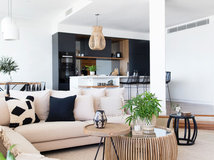

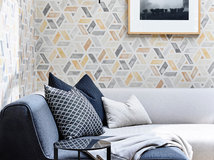

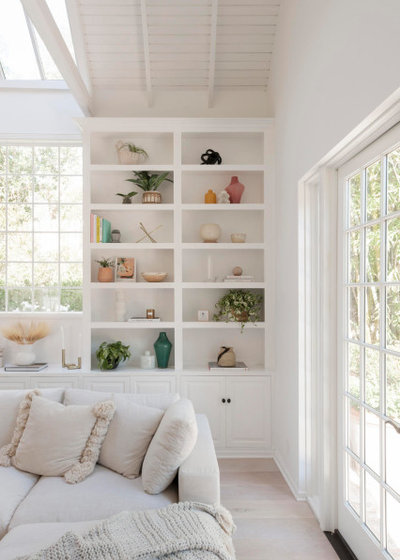




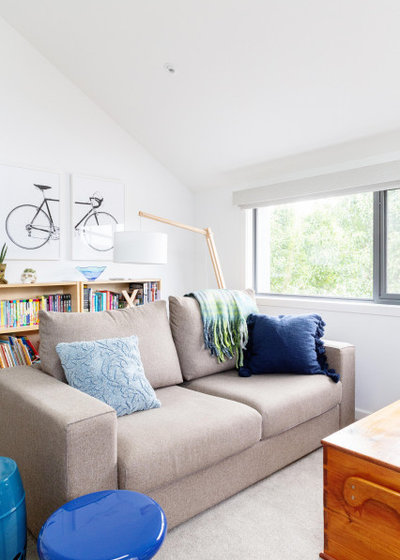




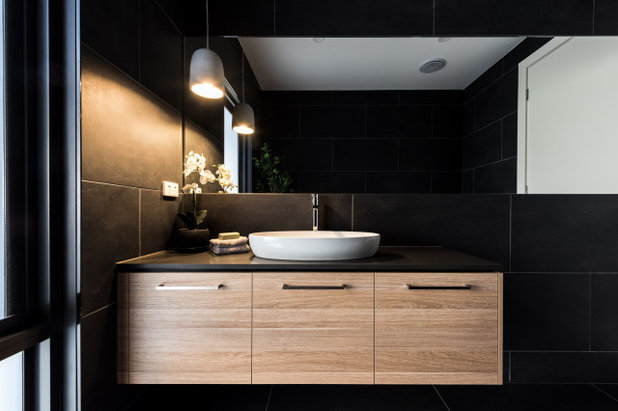















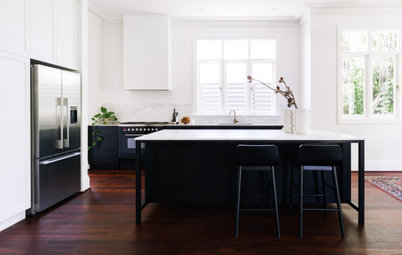




I actually love our towel warmer. We got the idea from staying in friends’ homes in England. My husband has it on an adjustable timer so it automatically comes on early enough to heat up our towels during the work week and later on the weekends. Ours is electric and we live in Alaska, so I enjoy a nice hot shower and warm, cozy towel to start my winter mornings.
Our home isn’t huge and definitely lacked storage as it was built in the 70s. So I’ve been adding storage from closet organizers, Murphy bookcases, to built-ins in our mud room. I can’t wait to have a pantry to store our small appliances, food, and supplies. No need for a sink or dishwasher but clutter free and so much better than the tops of our kitchen cabinets in an earthquake zone!
So many ideas that I like all, I can’t choose one.
These expert insights are truly invaluable for anyone looking to create a harmonious and functional family home. Adequate storage is a game-changer in maintaining a clutter-free environment, and heated towel racks add a touch of luxury and convenience to daily life.
Planning for the future is a smart approach, ensuring that your home grows with your family's changing needs. Walk-in pantries are a kitchen essential, offering both storage and a dedicated space for meal preparation.
Comfort should never be compromised, especially when it comes to furniture. Custom designs tailored to your family's unique preferences ensure that everyone can relax and unwind.
Proper lighting is often underestimated but can completely transform the mood and functionality of a space. And well-thought-out space planning ensures that every room flows seamlessly, fostering togetherness and privacy when needed.
Lastly, adding a personal touch and cherished items to your home's design creates a space that truly feels like your own. Multifunctional spaces provide flexibility for various family activities.
Incorporating these features into your family home can make a world of difference, creating a haven where you can connect, relax, and thrive together.